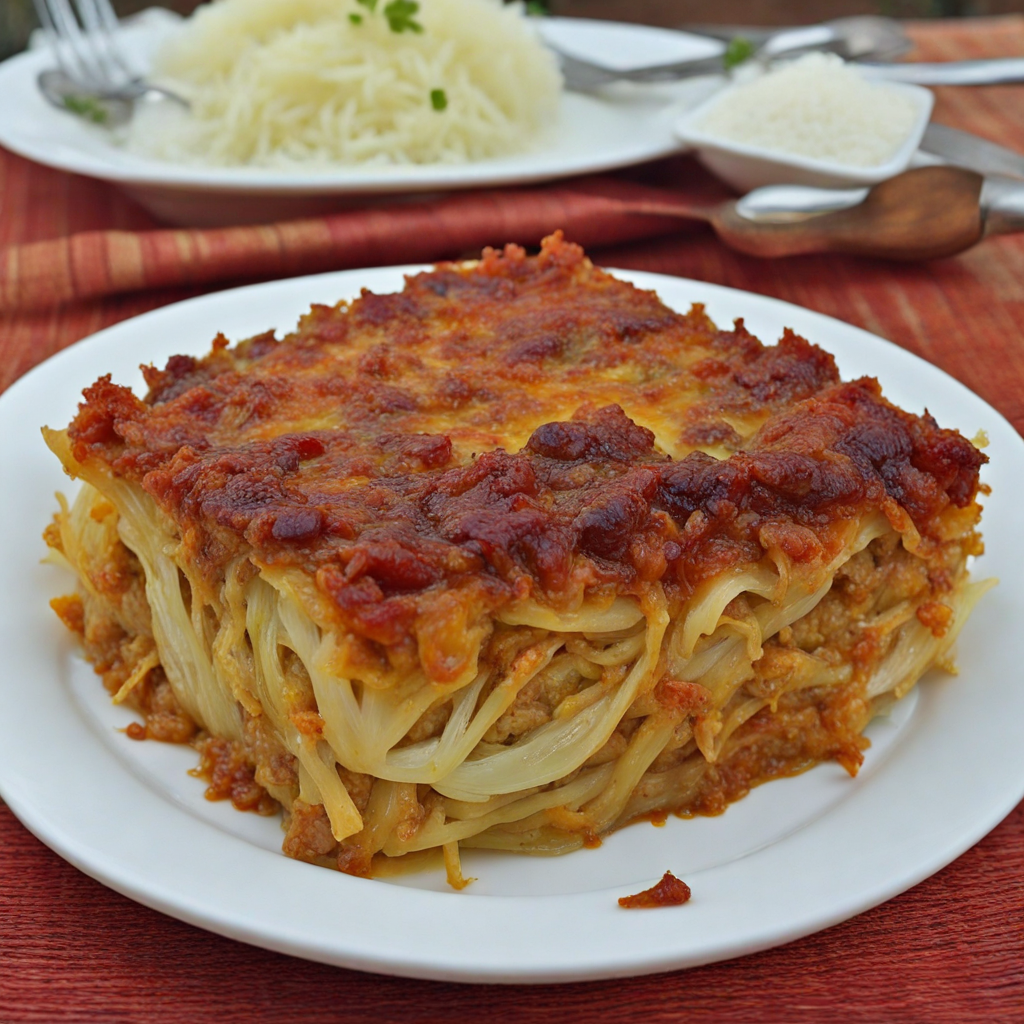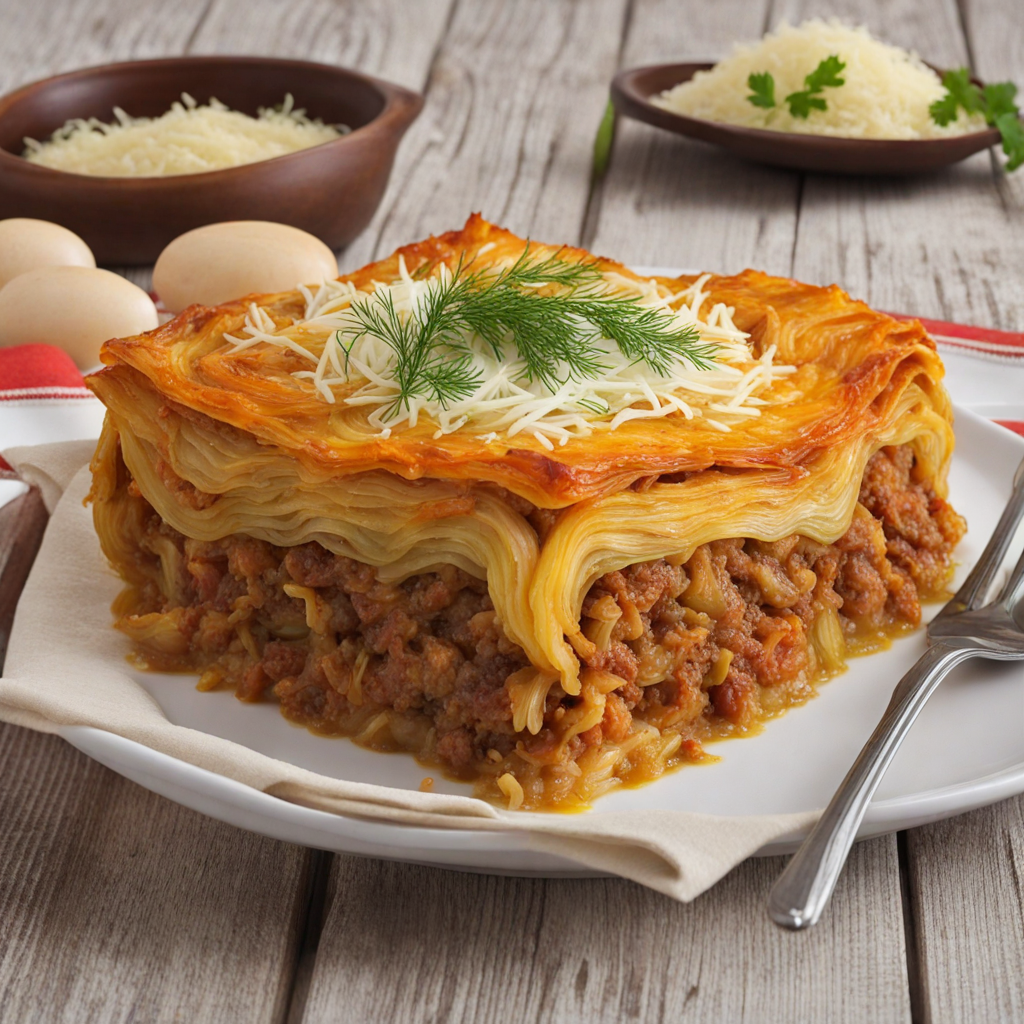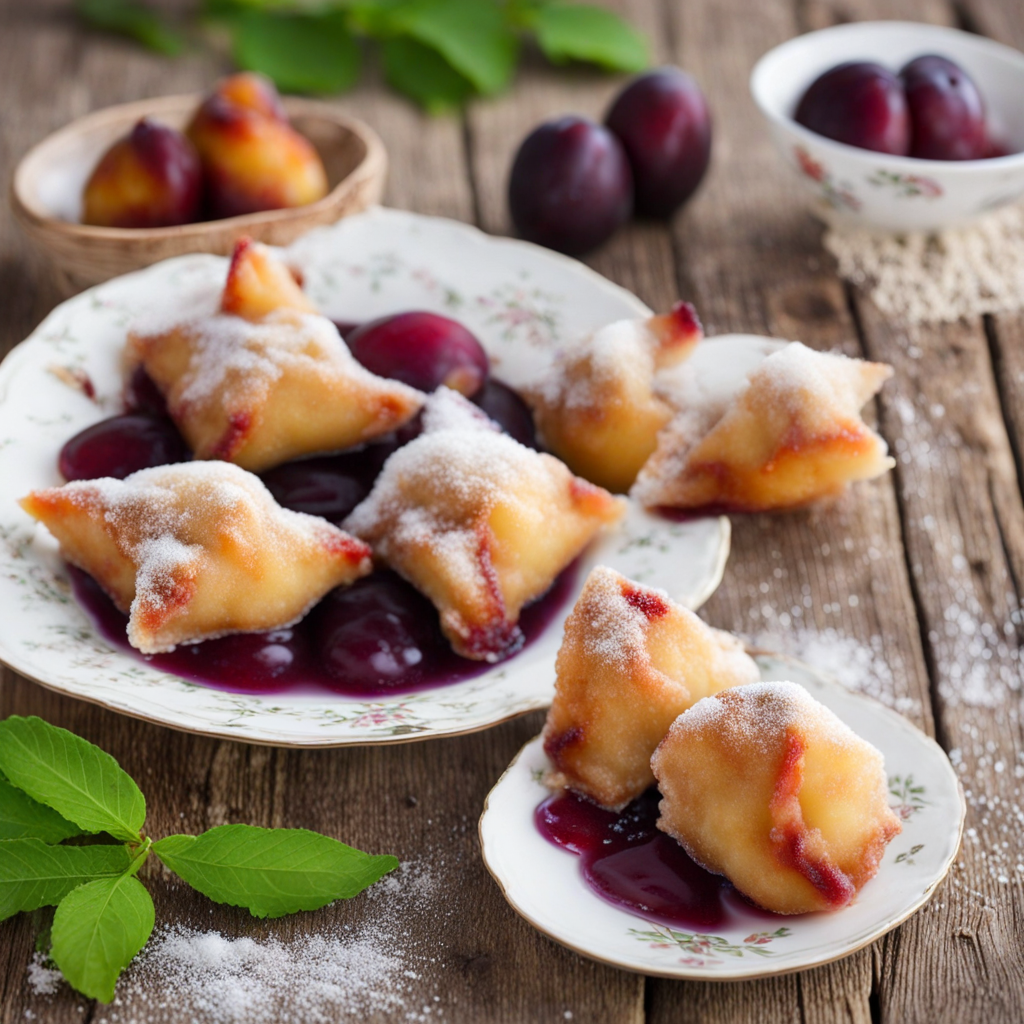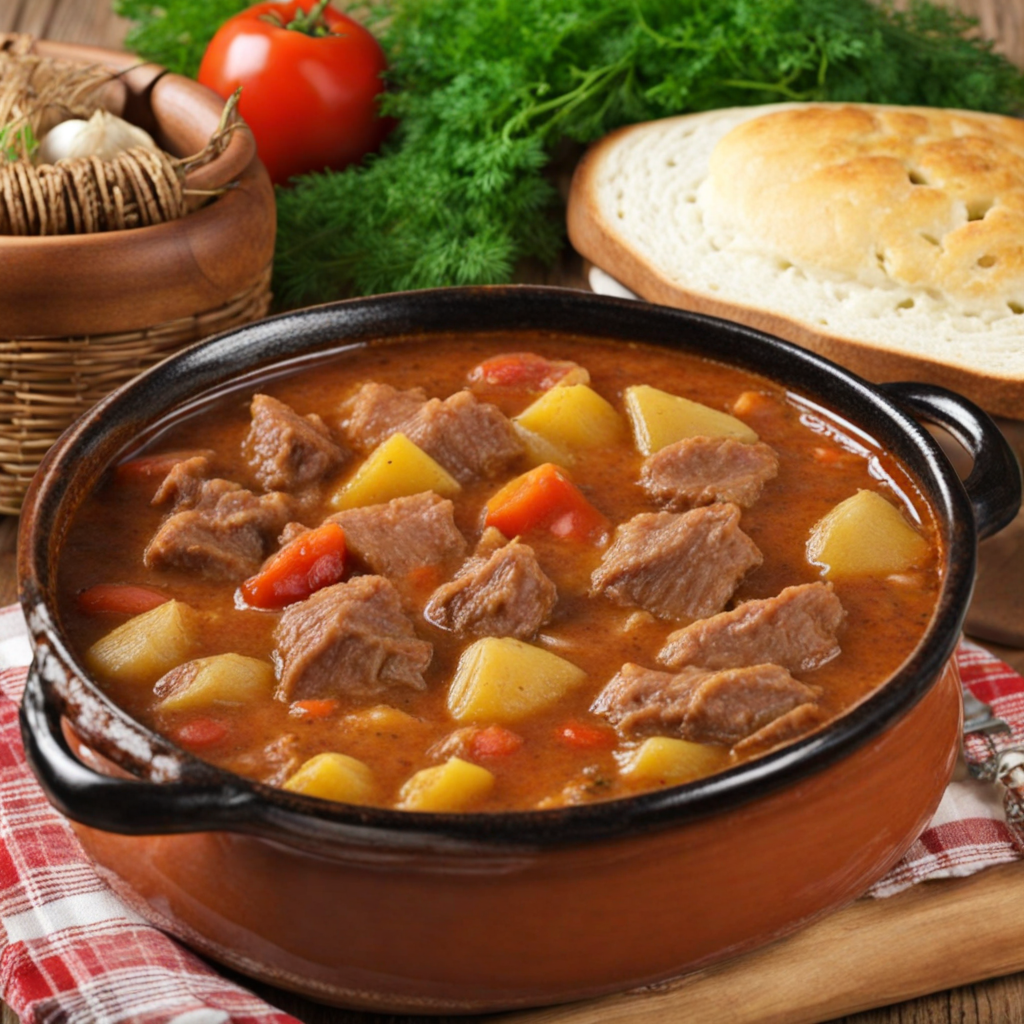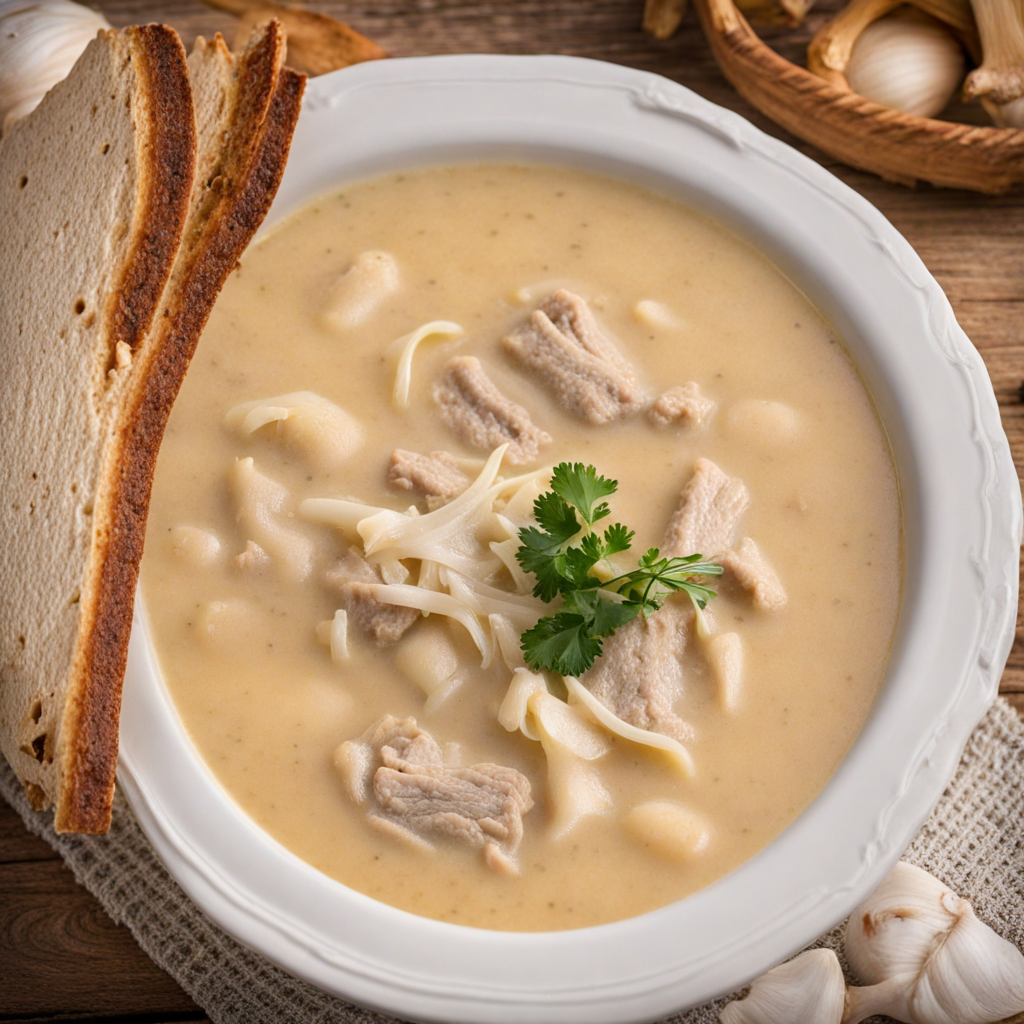Varză à la Cluj
Varză à la Cluj is a traditional Romanian dish that embodies the essence of comfort food with its hearty and robust flavors. This dish features layers of finely shredded cabbage, often mixed with rice, minced meat (typically pork or beef), and a medley of spices. It is similar to the concept of a casserole, where the ingredients are baked together, allowing the flavors to meld beautifully. The cabbage is usually fermented or pickled, giving it a distinct tang that complements the richness of the meat and the subtle crunch of the rice. The preparation of Varză à la Cluj requires patience and care, as each layer is meticulously assembled to create a warm, inviting dish. The cabbage acts as both a flavor enhancer and a natural wrapping for the filling, ensuring that the dish remains moist and flavorful during the cooking process. The use of herbs such as dill and thyme adds a fragrant note that elevates the overall taste experience. The dish is often topped with a sprinkle of smoked paprika, which lends a smoky depth and enhances the visual appeal with its vibrant color. Served warm, Varză à la Cluj is typically accompanied by a dollop of sour cream and a side of crusty bread, making it a satisfying meal perfect for gatherings or family dinners. The combination of textures—from the tender cabbage to the hearty filling—creates a comforting dish that warms the soul. It's a true representation of Romanian culinary heritage, offering newcomers a delightful taste of the country's rich gastronomic traditions.
How It Became This Dish
Varză à la Cluj: A Hearty Tradition from Romania #### Origins of Varză à la Cluj Varză à la Cluj, a beloved dish from the Transylvanian region of Romania, is a hearty and comforting meal that embodies the rich tapestry of Romanian culinary history. Its name translates to "Cabbage from Cluj," referencing the city of Cluj-Napoca, which is often recognized as the cultural heart of Transylvania. While the dish is deeply rooted in Romanian cuisine, its origins can be traced back to the influence of various cultures that have interacted with the region throughout history. The use of cabbage as a staple ingredient in Varză à la Cluj reflects the agricultural practices of the area. Cabbage is a hardy vegetable that thrives in the cooler climate of Transylvania, making it a fundamental component of peasant diets for centuries. The dish showcases the use of locally available ingredients, which is a hallmark of traditional Romanian cooking. The earliest records of cabbage dishes in Romania can be found in medieval texts, where fermented cabbage—sauerkraut—was a common preservation method. Cabbage rolls, known as "sarmale," are another popular dish, indicating a long-standing tradition of using cabbage as a wrapping for various fillings. Varză à la Cluj likely evolved from these earlier dishes, adapting to local tastes and ingredients over time. #### Cultural Significance Varză à la Cluj is more than just a dish; it is a symbol of Romanian hospitality and communal eating. It is often prepared for family gatherings, celebrations, and holidays, particularly during the colder months when hearty meals are sought after. The act of making Varză à la Cluj is often a communal effort, with family members coming together to prepare the meal, highlighting the importance of family ties and shared traditions in Romanian culture. The dish also reflects the agricultural lifestyle of the region. It embodies the concept of "farm-to-table," as the ingredients are typically sourced from local farms. Romanian cuisine has always emphasized seasonal and regional ingredients, and Varză à la Cluj is no exception. This connection to the land and the seasons reinforces the cultural significance of the dish, as it serves to remind people of their roots and the importance of preserving local culinary traditions. #### Ingredients and Preparation At its core, Varză à la Cluj consists of finely chopped cabbage layered with a mixture of minced meat—often pork—rice, and spices. The dish is typically baked in the oven, allowing the flavors to meld and the cabbage to become tender. The preparation process is labor-intensive, involving the sautéing of onions, the mixing of the meat and rice filling, and the layering of ingredients in a baking dish. One of the unique aspects of Varză à la Cluj is its versatility. While the traditional recipe calls for pork, variations exist that incorporate beef, chicken, or even vegetarian options, appealing to a wide range of dietary preferences. Some recipes also include smoked meats or sausages, adding a depth of flavor that enhances the overall experience. The dish is often served with sour cream and polenta, which complement the richness of the cabbage and meat filling. This combination of flavors and textures creates a satisfying meal that is both nourishing and comforting. #### Evolution Over Time As Romania underwent significant historical changes, so too did Varză à la Cluj. The dish has adapted to reflect the influences of various cultural and political shifts, particularly during and after the Austro-Hungarian Empire's rule over Transylvania. This period introduced new culinary techniques and ingredients, which made their way into traditional dishes, including Varză à la Cluj. In the 20th century, with the advent of globalization and the rise of modern cooking methods, Varză à la Cluj began to appear in restaurants and on menus beyond Romania. Chefs started to reinterpret the dish, experimenting with flavors and presentation, which led to a renewed interest in traditional Romanian cuisine both locally and internationally. Today, Varză à la Cluj is often found at Romanian festivals and events, showcasing the country's culinary heritage to a broader audience. The rise of food tourism has also played a role in the dish's evolution. As more people travel to Romania and seek authentic culinary experiences, Varză à la Cluj has gained prominence as a must-try dish. Home cooks and chefs alike have embraced the opportunity to share their interpretations of the dish with visitors, further solidifying its status as a cultural icon. #### Modern-Day Relevance In contemporary Romania, Varză à la Cluj continues to hold a special place in the hearts of many. It is not only a reminder of home-cooked meals from childhood but also a dish that represents the resilience of Romanian culture. As the world grapples with issues of globalization and mass production, the emphasis on traditional, homemade dishes like Varză à la Cluj serves as a counterpoint, celebrating authenticity and local flavors. Additionally, the dish has found a place in the modern culinary landscape, where chefs experiment with contemporary techniques while honoring traditional recipes. Variations of Varză à la Cluj can now be found in fusion restaurants, where chefs blend Romanian flavors with international cuisines, appealing to a new generation of diners. #### Conclusion Varză à la Cluj is more than just a dish; it is a testament to Romania's rich culinary history and cultural heritage. Rooted in the agricultural traditions of Transylvania, it has evolved over centuries to reflect the influences of various cultures while remaining a beloved comfort food for many. Its significance in family gatherings, celebrations, and communal dining underscores the importance of food in fostering connections among people. As the world continues to embrace diverse culinary traditions, Varză à la Cluj stands as a delicious reminder of Romania's culinary identity—one that is deeply intertwined with the land, the seasons, and the shared experiences of its people. Whether enjoyed at a festive gathering or a quiet family dinner, Varză à la Cluj remains a beloved staple that resonates with the heart and soul of Romanian culture.
You may like
Discover local flavors from Romania


